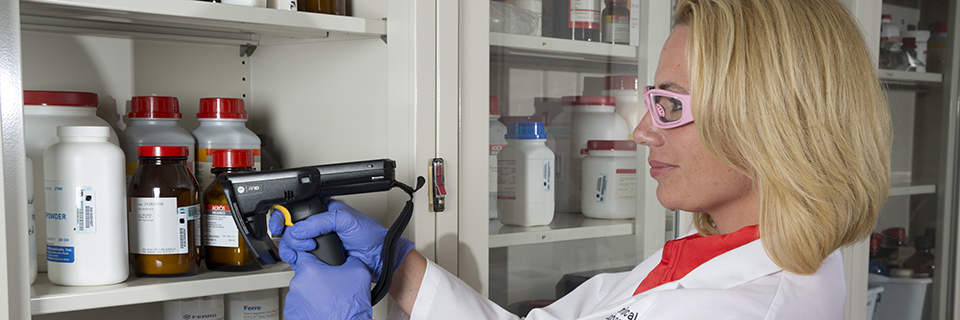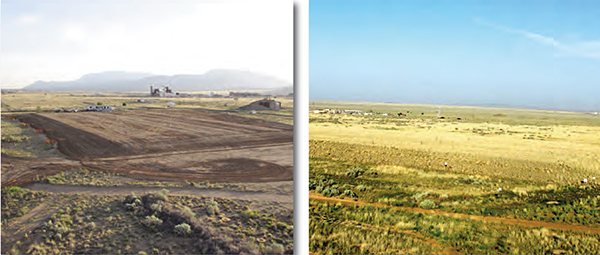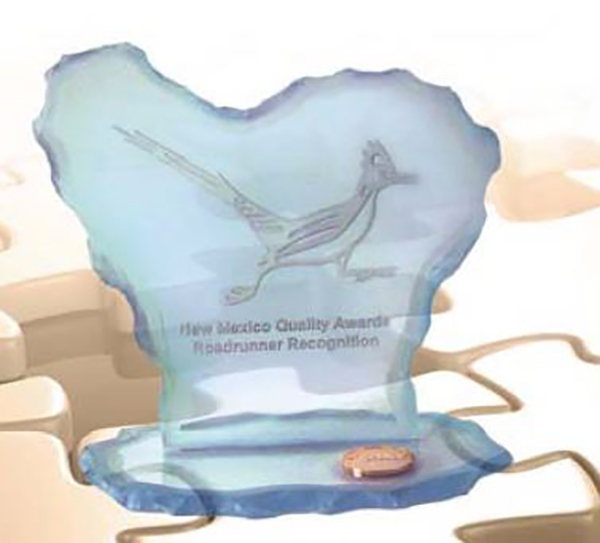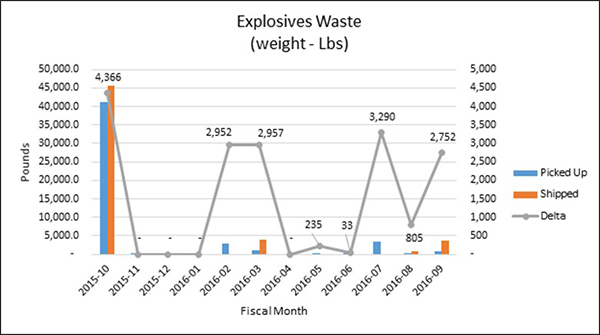
Mixed Waste Landfill

At left, the Mixed Waste Landfill Evapotranspirative Cover is shown during construction in 2009 after placement of the top soil layer. At right is a view to the west of the Mixed Waste Landfill engineered vegetative Evapotranspirative Cover with biointrusion barrier, June 2015.
After a 27-year effort and an approximate total cost of $22 million, Sandia’s Environmental Restoration Team achieved a landmark milestone with the closure of the Mixed Waste Landfill (MWL) and its full transition to Sandia’s Long-Term Stewardship Program. From 1959 to 1988, the MWL had received low-level radioactive waste, hazardous waste, and mixed waste. Closure efforts, which began in 1989, included investigations, monitoring, computer modeling, engineered barrier installation, and implementation of long-term safeguards. The New Mexico Environment Department Final Order for closure became effective in March 2016. (6100, 6200, 4100, 4200, 11100)

Security and Emergency Management (S&EM) achieved Quality New Mexico (QNM) Roadrunner Level 3 Status. The criterion for the award, based on the Baldrige Excellence Framework, is used worldwide to guide operations, improve performance, and achieve sustainable results. This accomplishment validates the commitment S&EM has made to process improvement and the incorporation of systemic quality principles into its activities. Additionally, obtaining QNM Roadrunner status plays a key role in the center’s efforts toward achieving its Operational Excellence strategic objective. (4200)
Emergency Management personnel successfully responded to a life-saving emergency. When the Emergency Management Communications Center received a 911 call related to an unresponsive person, the closest Protective Force personnel responded and immediately performed CPR. Emergency Response personnel then arrived on the scene to find the patient unconscious, unresponsive, and without a pulse. The Emergency Response Team took charge of scene management, airway management, compressions, and prepared the IV bag for the Sandia paramedics. The patient was then transported to Presbyterian Hospital for further treatment. (4200)
All buildings in New Mexico and California now have chemical containers tagged with Radio Frequency ID – more than 102,000 containers total – to ensure safer inventory reconciliation processes and increase accuracy of chemical inventory (see photo at top of page).
Team members from across Infrastructure Operations were fully integrated in the first of two supersonic reverse ballistic tests in support of the B61-12 nuclear weapons program. ES&H was engaged in all stages of testing, including planning, recovery, and ultimate disposition of test debris. Facilities assisted with site preparations and checking grounding systems. Emergency Management provided unified command during operations. The test was executed without incident and the site was remediated and restored in a safe condition for both the environment and personnel. (4100, 4200, 4800)
Disposing legacy explosives

Terrence Buck of Brookhaven National Lab talks to several students from the Atlanta University Consortium Center schools about possible career and internship opportunities within the DOE/NNSA Complex. Sandia was one of 17 national labs present to attract talent to the DOE/NNSA Complex.
Completing a four-year process, the final disposal of 8,300 legacy explosive Trackable Units was made in 2016. In 2011, Kirtland Air Force Base sought to eliminate explosive waste disposal on site. In response, a multi-function team assessed both classified and non-classified materials, streamlined the process, and created a disposal solution, all compliant with Department of Transportation requirements for off-site packaging and transportation. When all the final legacy waste items were properly disposed, it amounted to 32,000 pounds of explosive waste. (4100)